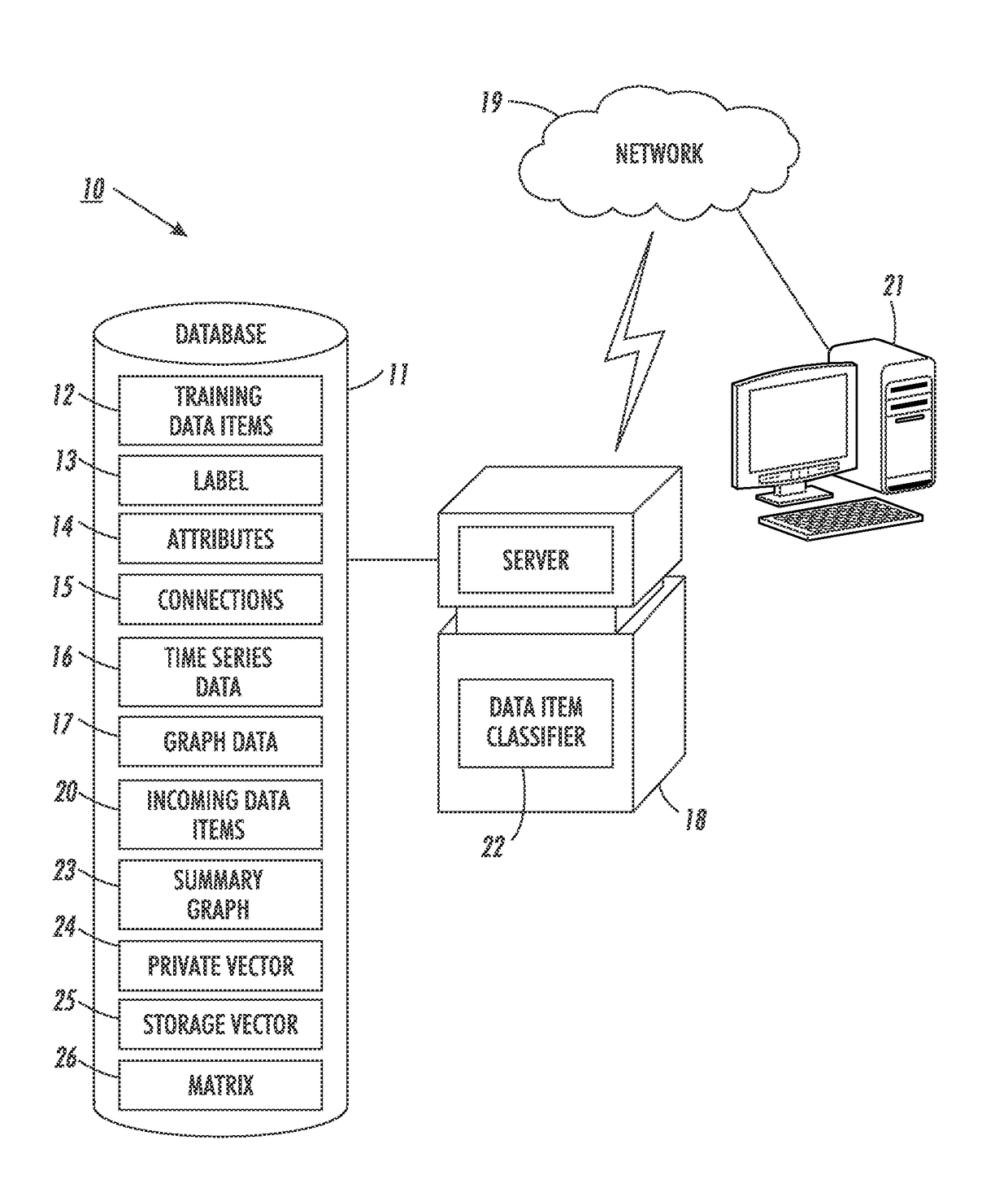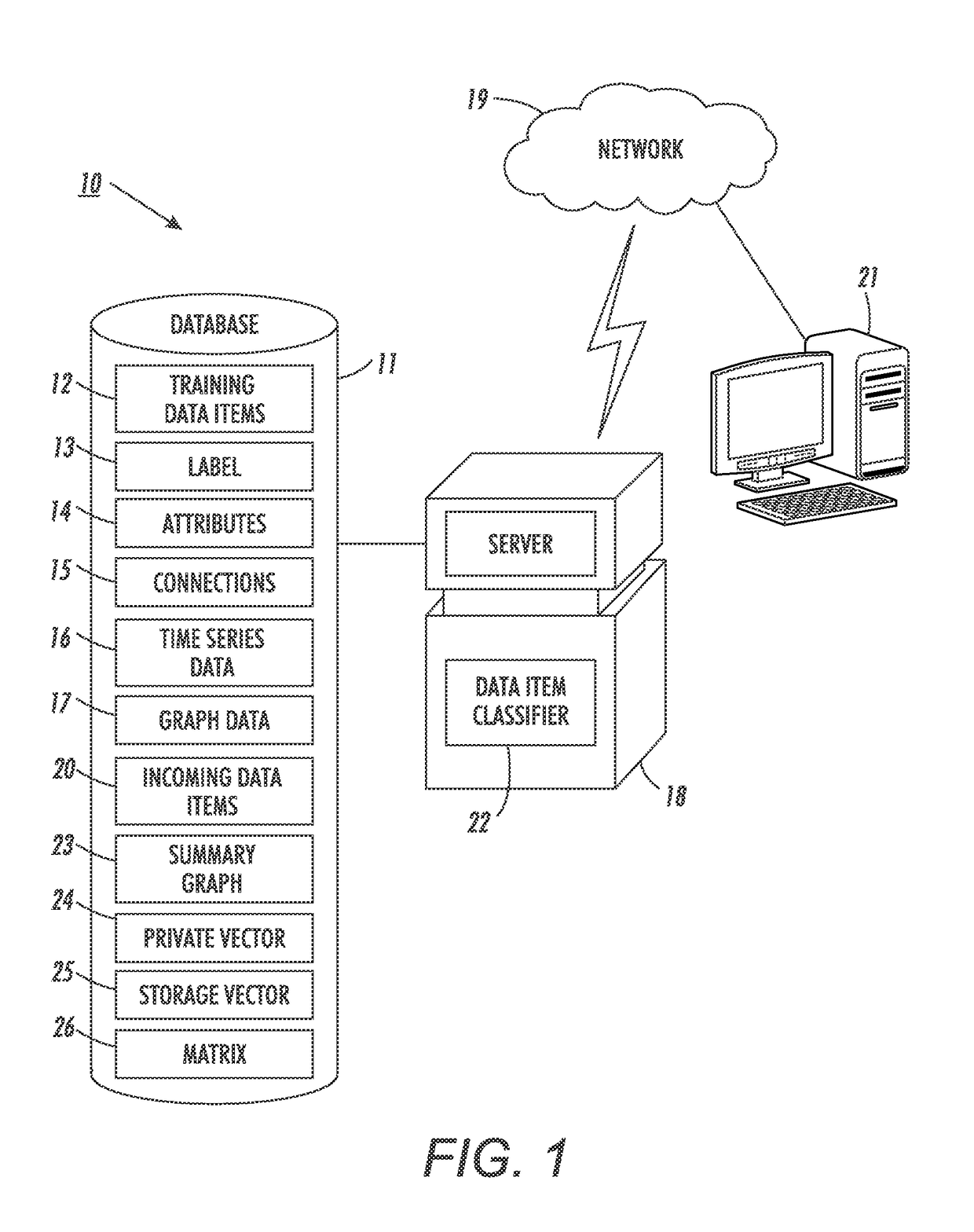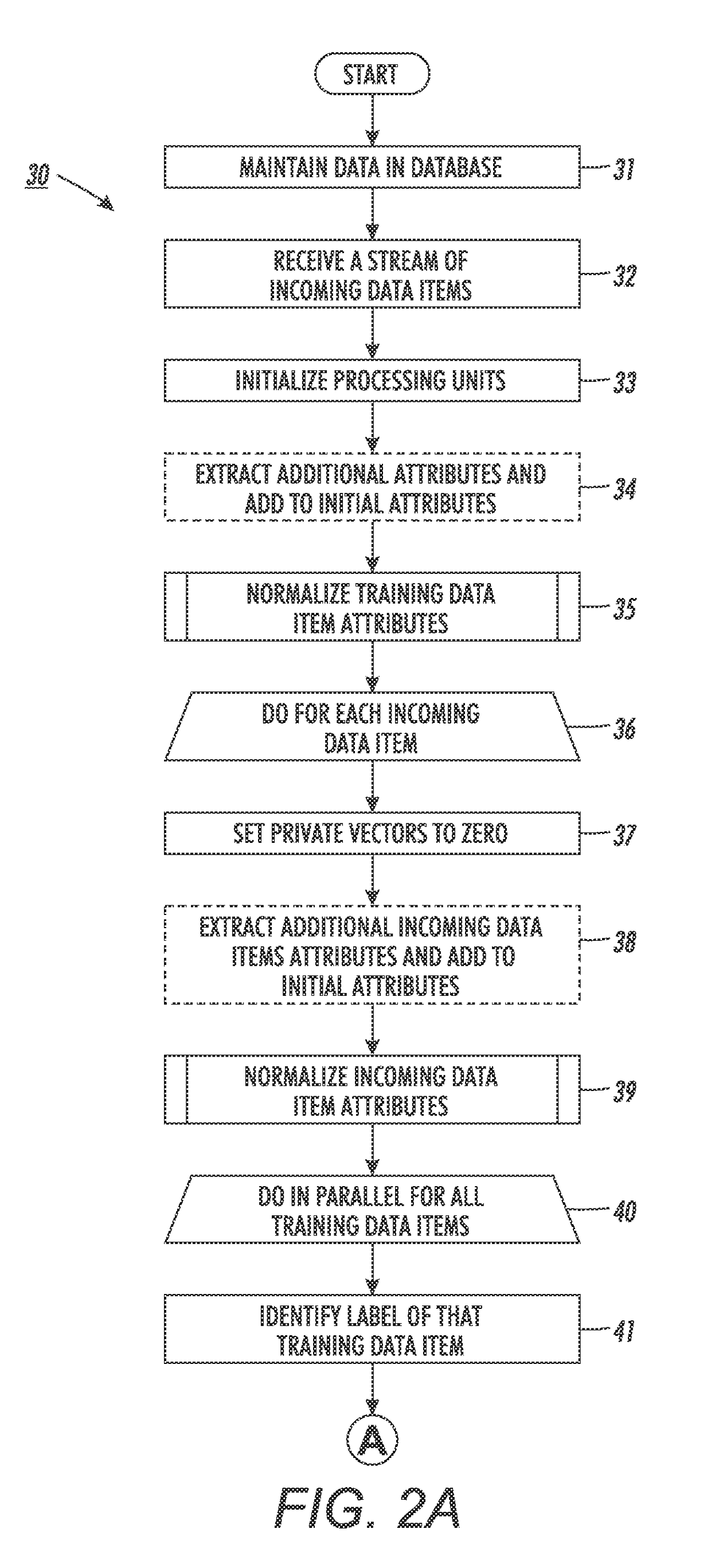Computer-Implemented System And Method For Relational Time Series Learning
a computer-implemented system and time series technology, applied in the field of prediction (classification and regression), can solve problems such as limiting their usefulness, limiting the usefulness of the time series, and limiting the degree of observability of the dependence between the time series
- Summary
- Abstract
- Description
- Claims
- Application Information
AI Technical Summary
Benefits of technology
Problems solved by technology
Method used
Image
Examples
Embodiment Construction
[0018]While the system and method described below focus on assignment and prediction of labels for data items, the techniques described below could also be used for regression.
[0019]FIG. 1 is block diagram showing a computer-implemented system 10 for parallel maximum similarity classification in accordance with one embodiment. The system 10 includes a database 11 that stores a plurality of training data items 12, also referred to as training objects or training instances below. For example, each of the training data items 12 can be a name or another identifier of a person or another entity, such as an organization, in the database. The data item 12 can also be a vector that includes one or more numerical values. Each of the training data items 12 is associated with one of a plurality of labels 13, with each label identifying a class to which the training data item belongs, the labels being stored in the database 11. For example, a label 13 can be identify a person with a certain med...
PUM
 Login to View More
Login to View More Abstract
Description
Claims
Application Information
 Login to View More
Login to View More - R&D
- Intellectual Property
- Life Sciences
- Materials
- Tech Scout
- Unparalleled Data Quality
- Higher Quality Content
- 60% Fewer Hallucinations
Browse by: Latest US Patents, China's latest patents, Technical Efficacy Thesaurus, Application Domain, Technology Topic, Popular Technical Reports.
© 2025 PatSnap. All rights reserved.Legal|Privacy policy|Modern Slavery Act Transparency Statement|Sitemap|About US| Contact US: help@patsnap.com



